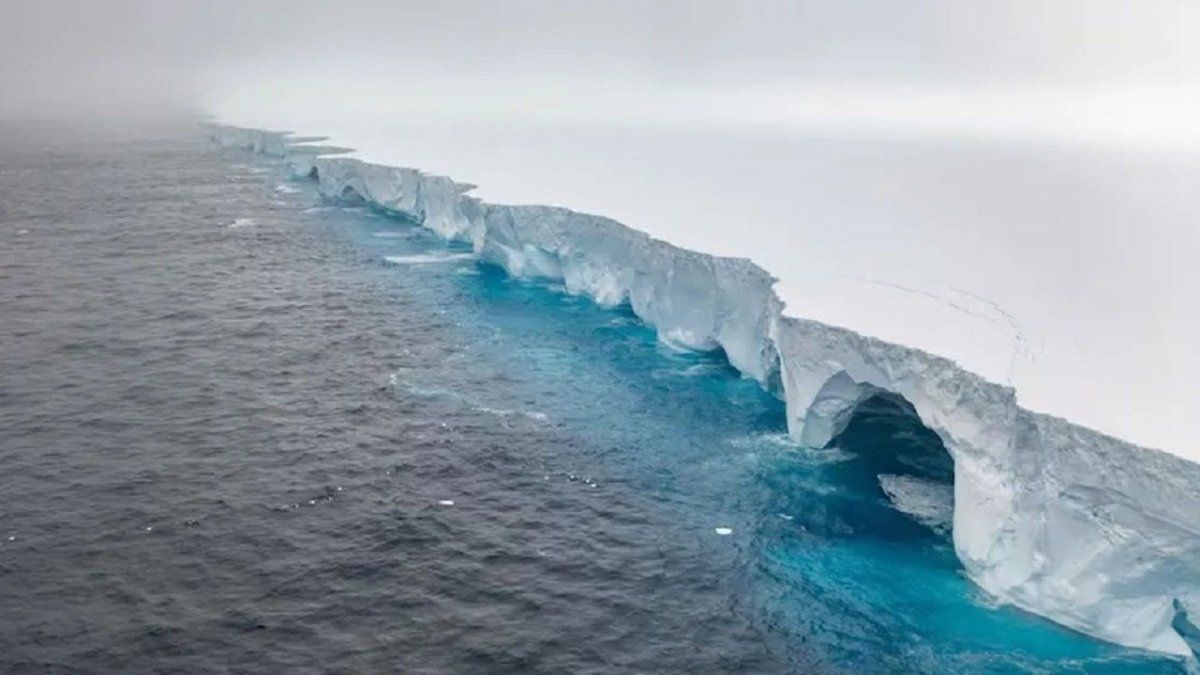Initially, his route seemed directly to the island, which raised concerns about possible damage which could cause the local marine ecosystem. However, on March 1, 2025, the A23A He stopped some 73 kilometers of the islandwhich surprised many, since the iceberg had not been planned to be caught at this point.
He British Antartic Survey (BAS)which was monitoring the movement of the iceberg, indicated that the current location of the A23A could reduce the risks for the fauna of the area. According to Andrew MeijersBAS oceanograph, “if the iceberg remains on land, we do not expect it to significantly affect local wildlife.”
This statement seems to relieve the concerns of those who feared that the fauna of South Georgiasuch as penguins and seals, could be seriously affected by the proximity of the iceberg.
The A23A detached from the ice platform Filchner in the Antarctica in 1986 and remained in the Weddell Sea For more than 30 years. His displacement to the north began in 2020, driven by the currents of the southern ocean.
Iceber A23a.jpg
The A23a stopped about 73 kilometers from the island.
BBC
As he advanced, scientists feared that the iceberg collided with the island or be stranded in less deep waters near the coast, which could seriously alter the ability of the animalsS local to feed and reproduce.
This scenario would have had devastating consequences for species such as penguins and seals, which depend on nearby waters for the feeding of their young.
The current situation of the iceberg in the sea
However, the iceberg is currently located at a safe distance from the island. Meijers He commented that, in recent decades, Many icebergs that followed this same route tended to disintegratefragment and melt before approaching the islands.
In the case of A23a, it seems that the iceberg is not falling apart in smaller pieces, as happened with a 19 -kilometer fragment which came previously.
“It will be interesting to see what happens now,” he said Meijers. The satellite images obtained at the end of February 2025 showed that The closest edge of the iceberg had ceased its advancewhich led some to speculate if it could be permanently trapped in that location. Although the situation does not represent an immediate risk for local fauna, the future remains uncertain.
Possible benefits and risks to the marine ecosystem
The fact that the A23a is detained could bring some unexpected positive effects for the region’s ecosystem. Meijers He explained that nutrients released by the member and running of the iceberg could increase the availability of food for local animals, such as penguins and seals.
“The nutrients removed by the running (of the iceberg) and for their melting canUument the availability of food for the entire regional ecosystem”, Said the oceanographer. This situation could be a relief for species that already faced difficulties due to an avian flu outbreak in the previous season, which had affected animals on the island.
However, there are also risks associated with the iceberg. Although it does not represent a danger to navigation, due to its size and the capacity of the ships to avoid it, the fragmentation of the A23a I could complicate fishing activities In the region.
Meijers warned that Certain areas could be inaccessible For commercial fishing boats due to the presence of small iceberg fragments, which although smaller, turn out to be more dangerous. This could generate Obstacles to fleets fishing that operate in the vicinity.
South Georgiaa British overseas territory, has been subject to sovereignty claims by Argentinalike Malvinas and the South Sandwich Islands.
The A23A is an iceberg of extraordinary dimensions, but it is not the only one in its kind. In the last five years, at least two other icebergs have been recorded in the same area. However, phenomena like these are part of the natural cycle of ice platforms in the Antarctica. According to Meijers“These huge icebergs are a completely normal part of the life cycle of the ice layers of Antarctica.”
However, the acceleration of ice loss in the region is a matter of concern. Since 2000, Antarctica’s ice platforms have lost more than 5 billion tons of mass
The increase in global temperatures has intensified the melting of ice layers in the Antarcticacontributing to the increase in sea level. The researchers warn that, under certain circumstances, an increase in the average temperature of the planet could trigger an even greater melting, which would raise the level of the oceans.
Source: Ambito




